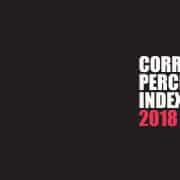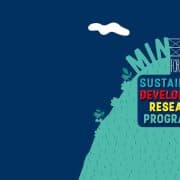|
Getting your Trinity Audio player ready...
|
In October Corruption Watch launched our research report on corruption in the mining approvals process. The report focused specifically on the start of the mining chain of events, where permits are sought and granted and decisions are made about when, where and under what circumstances mining can occur, according to a rigorous set of procedures that is supposed to be followed consistently.
We identified numerous vulnerabilities in the mining application process, which give rise to corruption between mining companies, government authorities and community leaders, often to the detriment of mining-affected communities. This happens before any ground is even broken.
Our report is part of a Transparency International (TI) global initiative known as the Mining for Sustainable Development Research Programme (M4SD). TI chapters in 18 resource-rich countries, including South Africa, contributed to this project which aims to bring about a greater understanding of corruption risks in the mining approvals process so that corruption can be countered at the very start of the process.
The global report, titled Combatting corruption in mining approvals: assessing the risks in 18 resource-rich countries, has just been released, and it paints a picture of corruption risks in mining approvals processes all around the world, from West African nations with their abundant natural mineral resources, to the mining giants of the Pacific and North America. Every time a government signs a deal to allow mining of its natural resources there are corruption risks – no matter where that country is.
These risks can result in environmentally unsound and socially destructive mining projects being approved. They can also lead to politicians or government officials taking advantage of their position to profit from their interests in the sector and local communities being excluded from decision-making processes that could cause them to lose their homes.
In South Africa, for example, we found that often, the community consultation process ends up as a tick-box exercise between mining companies and traditional leaders, who frequently profit at the expense of local communities, who should benefit from such arrangements. This is because under the Mineral and Petroleum Resources Development Act, there are no systems in place to ensure that meaningful consultation is taking place.
One of the root causes of corruption at this stage of the mining process is a lack of transparency and accountability in the awarding of mining sector licences, permits and contracts. TI has also made available a mining awards corruption risk assessment tool , which helps users to identify and assess the underlying causes of corruption in mining sector awards – those risks that create opportunities for corruption and thereby undermine the lawful, compliant and ethical awarding of mining sector licences, permits and contracts.
A global picture of mining approval risks
Countries involved in the research include Armenia, Australia, Cambodia, Canada, Chile, Colombia, Democratic Republic of the Congo, Guatemala, Indonesia, Kenya, Liberia, Mongolia, Peru, Papua New Guinea, Sierra Leone, South Africa, Zambia, and Zimbabwe.
The report draws insight from more than 750 stakeholders from a range of sectors, as well as 250 more individuals who participated in validation and review of the risk assessments. Examples in the report are drawn from a broad range of contexts: major mining economies such as Australia, Canada and South Africa; emerging mining economies such as Cambodia and Kenya; and 11 members of the Extractive Industries Transparency Initiative (EITI).
These are a few examples of where and why corruption can occur:
Political and administrative
- There is poor transparency around political donations and lobbying by industry
• Controls on revolving doors between industry and government are weak
Land allocation
- The process and criteria for opening land to mining is not clear or transparent
• Land rights are poorly protected and not properly registered
Mining licence applications and approvals
- Due diligence on licence applicants is inadequate
• Decision-making criteria are unclear or decisions are vulnerable to ministerial interference
Environmental and social impact assessments (ESIAs)
- Verification of impact assessments is inadequate
• Criteria for environmental approval decisions are not clear or transparent
Community consultation
- Information about the project or its potential impacts is not accessible to community members
• Consultation only occurs with local elites
What needs to be done?
Change starts by answering these questions:
- Who benefits from mining approval decisions?
- How ethical and fair is the process for opening land to mining?
- How fair and transparent is the licencing process?
- Who gets the right to mine?
- How accountable are companies for their environmental and social impacts?
- How meaningful is community consultation?
Government, industry and civil society in any country can use these questions – and real country examples highlighted in the report – as a starting point for understanding corruption risks in their own context and to guide them in building corruption-free mining approvals regimes.
The assessing of these corruption risks is only the beginning, real change will come with the addressing of these corruption risks.
• This work has been funded by the BHP Billiton Foundation and the Australian Government through the Department of Foreign Affairs and Trade (DFAT).








